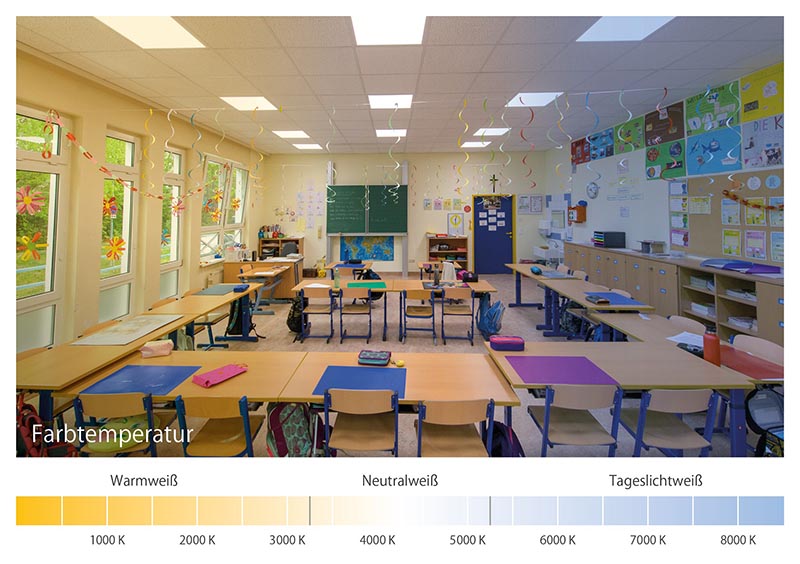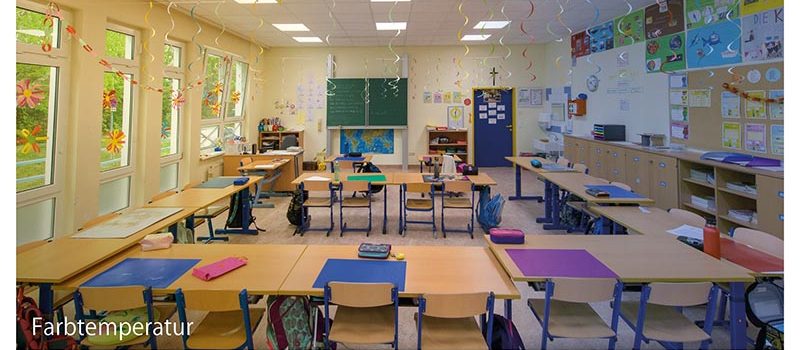Learning in appropriate light
Light can be much more than just a source of light: Studies show that the right light can improve atmosphere and well-being. In Vorarlberg, Austria, an project founds out that better illumination with light scenarios for elderly people had the side effect that they suddenly needed less medication, such as sleeping pills. To achieve this, the color of the light was simply changed to bluish in the evening.
If the appropriate lighting is installed, it means not only an increase in comfort, but also a better quality of life.

Color temperature scale at Ebreichsdorf elementary school – photo credit: Andreas Tischler
This effect is currently being researched at three elementary schools in Wien Energie’s partner communities: In cooperation with the research company Aspern Smart City Research (ASCR), the research project “Demand-oriented lighting” is being launched. Until mid-2022, the influence of smart lighting on the learning atmosphere and the well-being of students and teachers will be investigated. In addition to smart LED lighting, the indoor climate in the classes will be measured through the use of sensors.
Studying smart lighting in the classrooms
The aim is to answer the question of how light affects the general mood in the classroom, the natural daylight rhythm and specific activities. The basic assumption is that warmer light with more yellow and red components favors creative activities such as singing, painting or making music. Cooler light, on the other hand, is thought to promote the concentration needed for reading, writing and arithmetic.
ASCR’s interdisciplinary research team, consisting of a psychologist, an expert in climate policy and communication, and a technician, are accompanying the project. Teachers and parents are also involved in the research.
“At ASCR, we engage in applied research. We investigate how technical innovation plays out in specific situations: What actually works, what potentials are there, where do adjustments need to be made?” explains Robert Grüneis, Managing Director of ASCR. The key factor here is the user: It’s important that users are able to deal with the new technologies.



